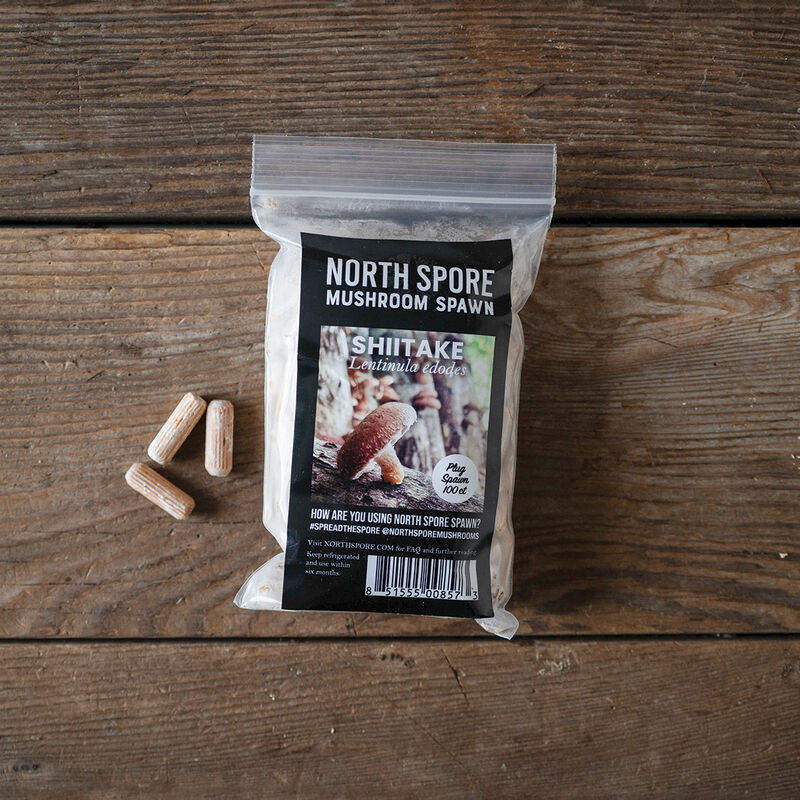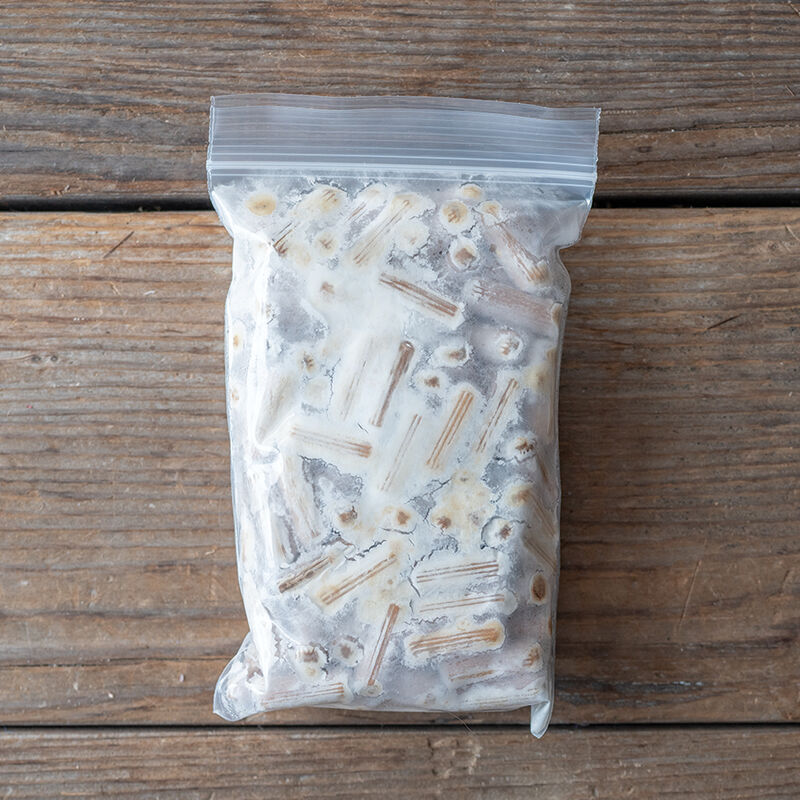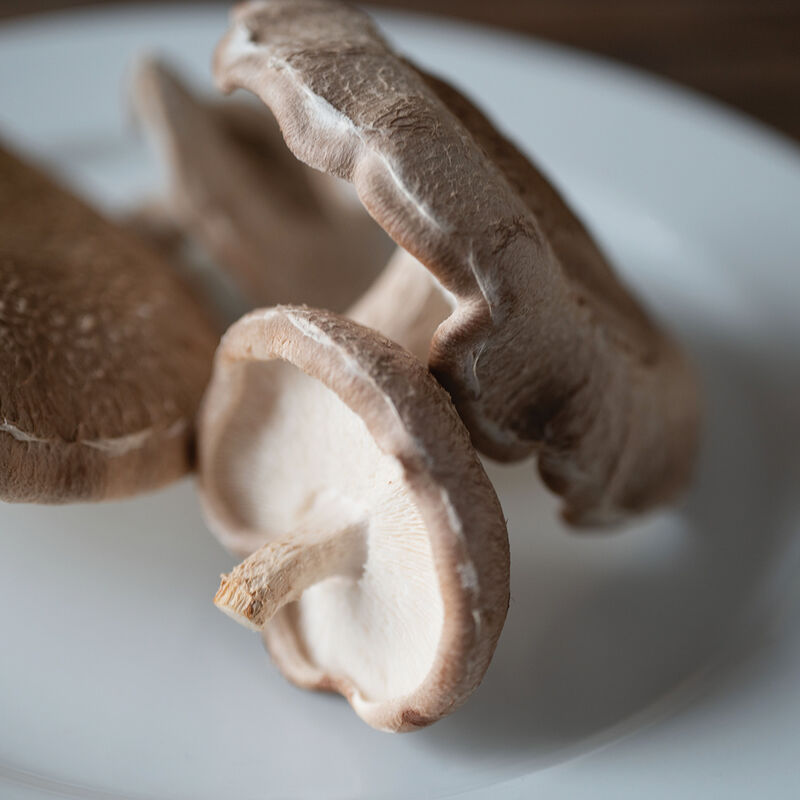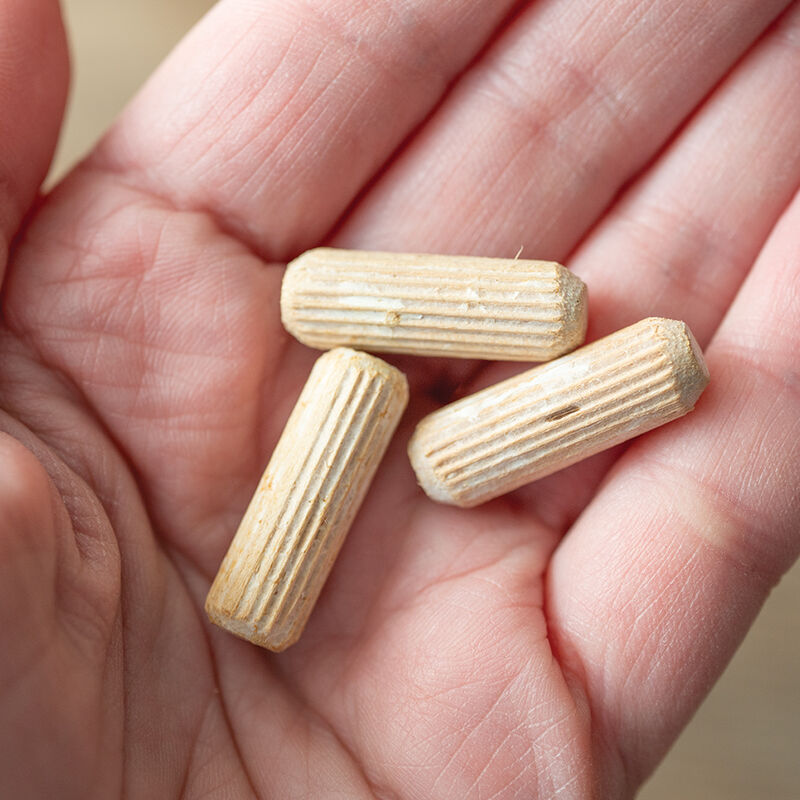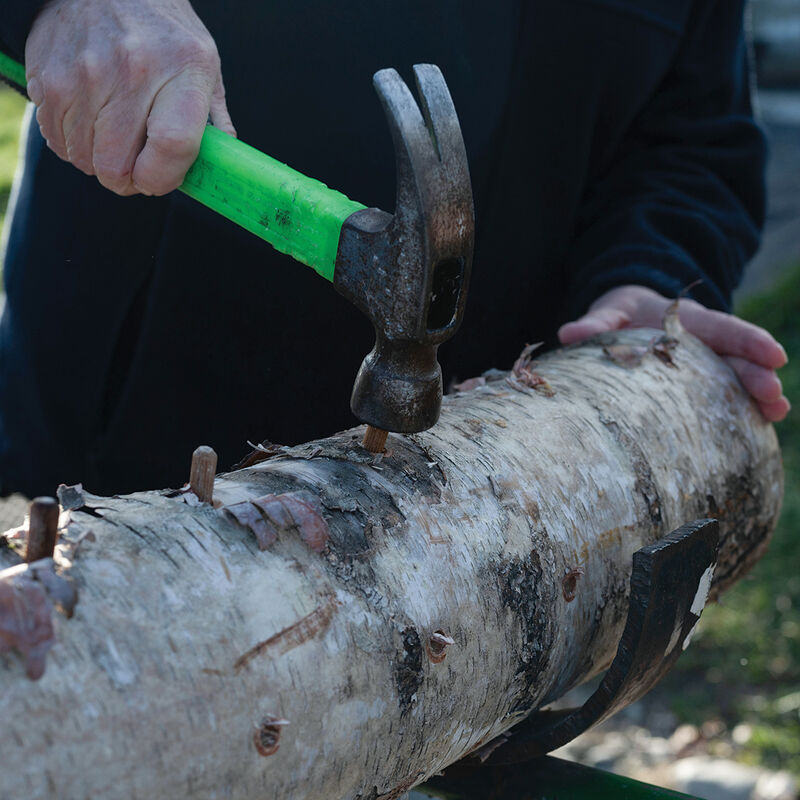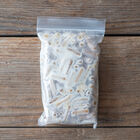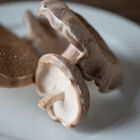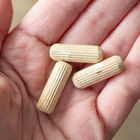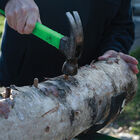Shiitake Plug Spawn – 100 Count Organic Mushrooms
Shiitake Plug Spawn – 100 Count Organic Mushrooms
Nutritious and medicinal.
Originating in East Asia, Shiitake strains have been selected for log production for hundreds of years and are therefore adaptable producers. They are particularly well-suited for dependable monthly flushes when force-fruiting. Known for their rich, savory, buttery flavor profile, these medium-to-large, brown, umbrella-shaped caps produce generous flushes. Colonization Rate: Colonizing quickly, 9–12 months, Shiitake make for an excellent choice for those who are beginners to mushroom growing.Optimal Growing Conditions: Fruiting temperatures ranging from 55–70°F (13–21°C). Ideal wood species include Alder, Beech, Hophornbeam, Hornbeam, Hard Maple, Oak, and Sweetgum. Alternatively, other suitable species like Basswood, Birch, Chestnut and more can be utilized. See our chart: Suitability of Tree Species for Growing Mushrooms on Logs for more information.Notes: Plug spawn is best suited for smaller projects involving 1–10 logs, although some log cultivators may employ them for more extensive projects. The wooden dowels used in our plug spawn are kiln-dried and remain untreated otherwise. Quantity: 100 count. USDA Certified Organic.
- This product does not ship to Canada.
- This product does not ship to the following countries: United Arab Emirates, Austria, Australia, Barbados, Belgium, Bulgaria, Bermuda, Bahamas, Switzerland, Cyprus, Czech Republic, Germany, Denmark, Estonia, Spain, Finland, France, United Kingdom, Greece, Hong Kong, Croatia, Hungary, Ireland, Iceland, Italy, Japan, Republic of Korea, Kuwait, Cayman Islands, Lithuania, Luxembourg, Latvia, Malta, Netherlands, Norway, New Zealand, Oman, Poland, Portugal, Qatar, Romania, Saudi Arabia, Sweden, Singapore, Slovenia, Slovakia, San Marino, Thailand, Trinidad and Tobago, Taiwan, Ukraine.
- This product does not ship to the following states and jurisdictions: HI.
CULTURE:
Use plug spawn to grow mushrooms outdoors on logs or stumps. Mushrooms require ample moisture. Choose a location for your inoculated logs that is easy to access and monitor and is at least partially shaded year-round. Easy access to a water source may also be beneficial. Please note that mushroom production in different climates may require altered practices, some options for which are detailed below.SPAWN STORAGE:
Mushroom growth begins from mycelium (a vegetative structure made up of white fibers). In plug spawn bags, this fuzzy growth can look like mold, but not to worry; it is healthy growth. If spawn needs to be stored prior to inoculation, refrigerate for up to 6 months, but fresh spawn will have the best chance of success. Do not open bag prior to the day of inoculation.DAYS TO MATURITY:
The amount of time between inoculation and the first fruiting will depend on species of both log and mushroom, environmental conditions, and size of the logs. Fruiting happens only once mycelium has been fully established in the logs, a process called "colonization." Smaller logs take less time to fully colonize than large logs, and stumps may take even longer. See species descriptions for average colonization times or use this general guidance: in areas with cold winters, it will take at least 1 year; in mild regions, it will take at least 3 seasons.
LOG SELECTION:
Some tree species are better suited to certain mushroom strains. See our chart: Suitability of Tree Species for Growing Mushrooms on Logs for more information. Healthy trees with intact bark can be harvested at any time of the year except in the spring between bud swell and full leaf-out when the tree's energy is supporting developing leaves. The ideal time is in the month prior to bud swell. Cut logs of at least 3" diameter to desired length. Logs should be inoculated within a week or two of cutting unless logs can be stored in a way that keeps them below freezing and hydrated, e.g., covered in snow during northern winters. STUMP GROWING: You can also use plug spawn to inoculate freshly cut stumps of a suitable species. This method has the potential to yield mushrooms for a significantly longer time than logs. Follow the instructions for growing on logs to produce mushrooms on stumps with the following additions. Make sure to first girdle the stump by removing the outer bark in a ring around the base to prevent suckers from growing. In the inoculation step, also drill holes in the cut surface of the stump.
INOCULATION:
Using an 8.5 mm bit, drill holes of 1" depth every 4–6" in rows 2–3" apart, staggered in a diamond pattern down the length of the log. Insert plug spawn into each hole and tap in with a hammer until flush with the surface of the log. Using daubers or a paint brush, seal plugged holes with melted wax. This protects the log both from drying out and potential contamination. If growing in a dry climate, consider also sealing the cut ends of the logs with wax. COLONIZATION:
In the time between inoculation and fruiting, keep logs close to the ground but not in direct contact with it, and stack densely to help mitigate moisture loss due to excessive airflow.FRUITING:
When logs are fully colonized, sometimes indicated by the presence of mycelium on the cut ends, they should be rearranged in a way that increases aeration and harvester access. Fruiting will naturally occur the first time. After the initial fruiting, if more regular harvests are desired, logs can be "force fruited" by soaking them in cold water for no more than 24 hours. This works best with shiitake mushrooms but can be attempted with other strains. Allow about 8 weeks between flushes if using this method. HARVEST: Clusters of maturing mushrooms grow very quickly and should be checked often when nearing maturity. To harvest, twist or cut clusters off the log at their base. Oyster varieties and Shiitakes: harvest just before caps begin to flatten out and edges are still curved under. Lion's Mane: harvest when tooth-like structures are 1/4– 1/2" long and before they begin to yellow. Overmature mushrooms will have a shorter shelf life and are more easily damaged in handling.PRODUCTION WINDOW:
The number of flushes that a log will produce depends primarily on log species and size. The larger the diameter, the longer the log will produce. Due to their diameter, stumps have the potential to produce for much longer than logs. In northern climates, a rule of thumb is that the log's diameter in inches equals the number of years it is likely to produce. This timeline will be shorter in mild areas with a more continuous growing season. PESTS AND DISEASE: Mold can grow on plugs damaged in transit, or on harvested mushrooms that have been stored for a long time. Do not consume moldy mushrooms. To combat slug damage, diatomaceous earth can be spread around the base of logs. Mammals can be a minor pest but often will not consume all your yield. Mammals can be deterred by using row cover, such as Agribon-15. It is better to harvest mushrooms when they are younger as they will usually have less pest damage.CAUTION: Ensure mushrooms are cooked thoroughly before consumption. If eating a species for the first time, start with a small amount to test for allergies. Logs grown outside have a higher risk of being colonized by other fungal species. Make sure to confidently identify mushroom species prior to consumption, as they may be a fruiting body of a local species.Johnny's is committed to your success, every step of the way.
We want you, our customer, to be 100% satisfied with all of our seeds, tools, and supplies.
If anything you purchase from us proves unsatisfactory, we will either replace the item or refund the purchase price.


